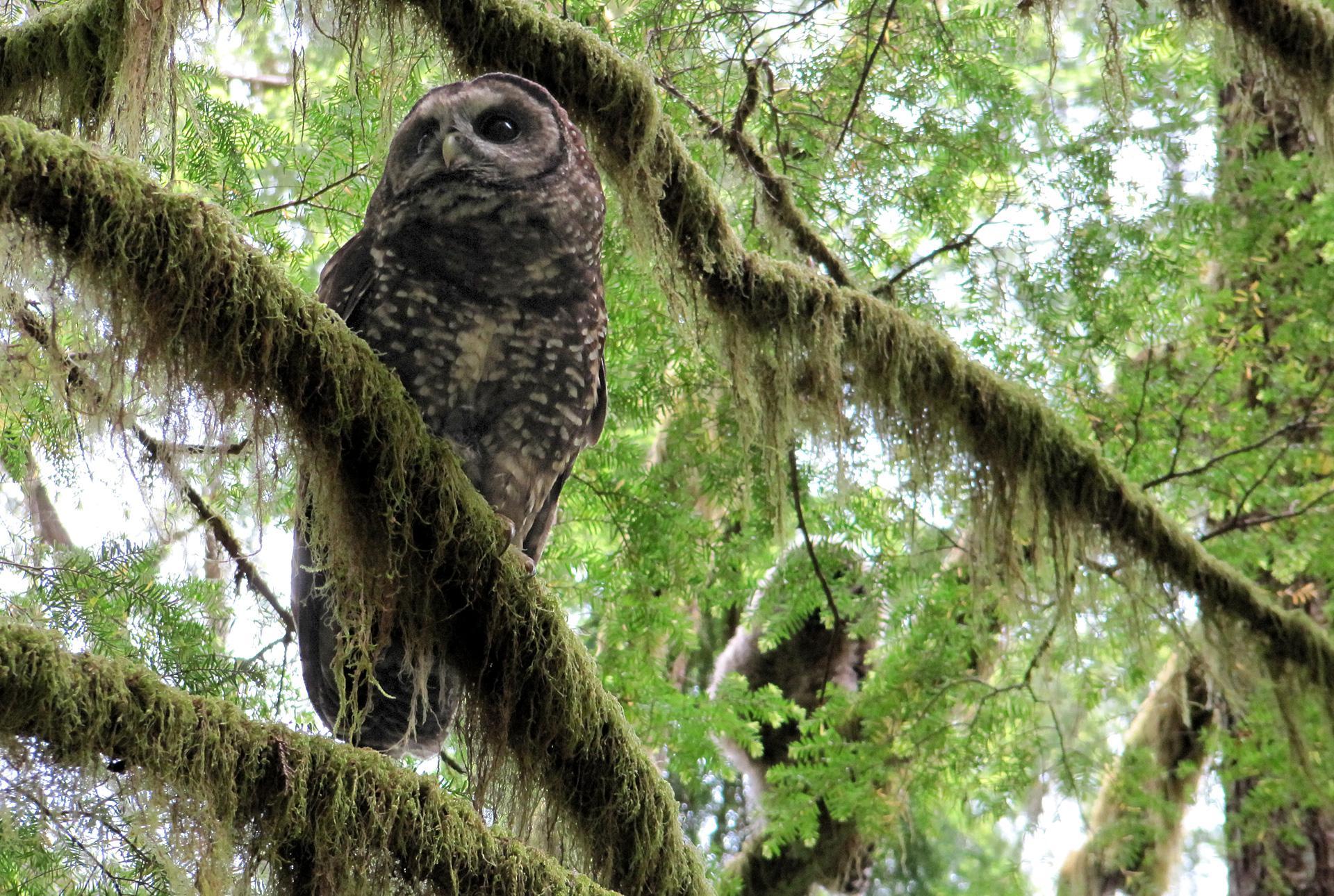
Spotted Owl
Rob Manning / OPB
The Northwest’s most iconic bird could get a conservation boost in the coming years.
On Wednesday the U.S. Fish and Wildlife Service is announcing it will review the protection status of the Northern Spotted Owl. The result could be an endangered species listing.
The owl was first listed as threatened in 1990. It was the height of the “Timber Wars” in the Northwest and the listing became a pivotal moment in the region’s cultural and economic history. It led to a temporary ban on logging in federal old growth forests and eventually to the Northwest Forest Plan, which cut logging on national forests and other federal land by more than 80 percent.
But despite 25 years of protections, the population of spotted owls continues to decline, according to the California conservation group EPIC (Environmental Protection Information Center). This is especially true in Washington and northern Oregon. The main reasons are habitat loss and the incursion of the barred owl.
More than two years ago, EPIC petitioned the Interior Department to upgrade the Endangered Species Act status of the spotted owl from threatened to endangered. Federal officials were supposed to review the petition within 90 days and decide if further consideration was necessary. But that process took closer to 2.5 years because of a "backlog of listing actions."
But now wildlife officials have agreed to review the status of the spotted owl, in large part because of the impact of the barred owl expanding its historic range.
“I like to refer to the barred owl impact as insult to injury,” said Paul Henson, Oregon Supervisor at the U.S. Fish and Wildlife Service.
“First you had a century or so of habitat loss through old growth timber harvest… and just as we began to turn the tide and turn that around on federal land with the Northwest Forest Plan… the barred owl comes along and kind of kicks the spotted owl while it's down,” he said.
The more-aggressive barred owl competes with the spotted owl for territory, nesting grounds and food sources. The Fish and Wildlife Service has barred owl removal experiments currently underway.
A change in status from “threatened” to “endangered” doesn’t necessarily increase protections of a species in a significant way. Under the Endangered Species Act, species designated as threatened can be captured or killed for a wider variety of reasons.
But according to the USFWS, both listings allow for “incidental taking, when done under the provisions of a Service-approved habitat conservation plan.” This means logging companies legally cutting old-growth forests can apply for a permit to kill spotted owl as a byproduct of the harvest.
Henson said a change in status wouldn’t automatically curtail logging, but it could make it more difficult to get incidental take permits and inform changes to how federal forests are managed.
“It sends a signal that the seriousness of the spotted owl situation is greater than it was previously, and it alerts the public to what might be a more sort of cautious and conservative recovery effort,” he said.
The prospect of forest managers being more cautious in protecting spotted owl populations could effect public timber sales.
The potential of an endangered listing also concerns Oregon Small Woodlands Association Executive Director Jim James.
“There are a lot of family woodland owners that own forestland in the habitat range of the northern spotted owl. And if they have older, mature timber, there’s always the risk of having occupancies by the spotted owl,” he said.
James said if that happens, it creates an economic crisis for that landowner. Increased protections could make that crisis more difficult to manage.
Dominick DellaSala of the Southern Oregon-based Geos Institute said expanding habitat protections is the way to ensure the survival of the spotted owl.
“We really are in the critical stage here. You kind of think of this as the patient at the intensive care unit,” he said. DellaSala argues the purpose of the Endangered Species Act is to move species out of critical care so they can stand on their own.
“But we’re not there yet with the owl. If anything we’ve gone further into the intensive care unit,” he said.
Federal officials will now begin a year-plus review process to determine if the science supports a change in listing. Their decision is expected in September 2017.
If the decision is to change the listing status, a peer review and public comment period will follow before the final rule is publish.
The Interior Department has previously received two other ESA-related petitions for the northern spotted owl. Both called for the species to be stripped of ESA protections (delisted). The USFWS found both were lacking in sufficient scientific backing.
